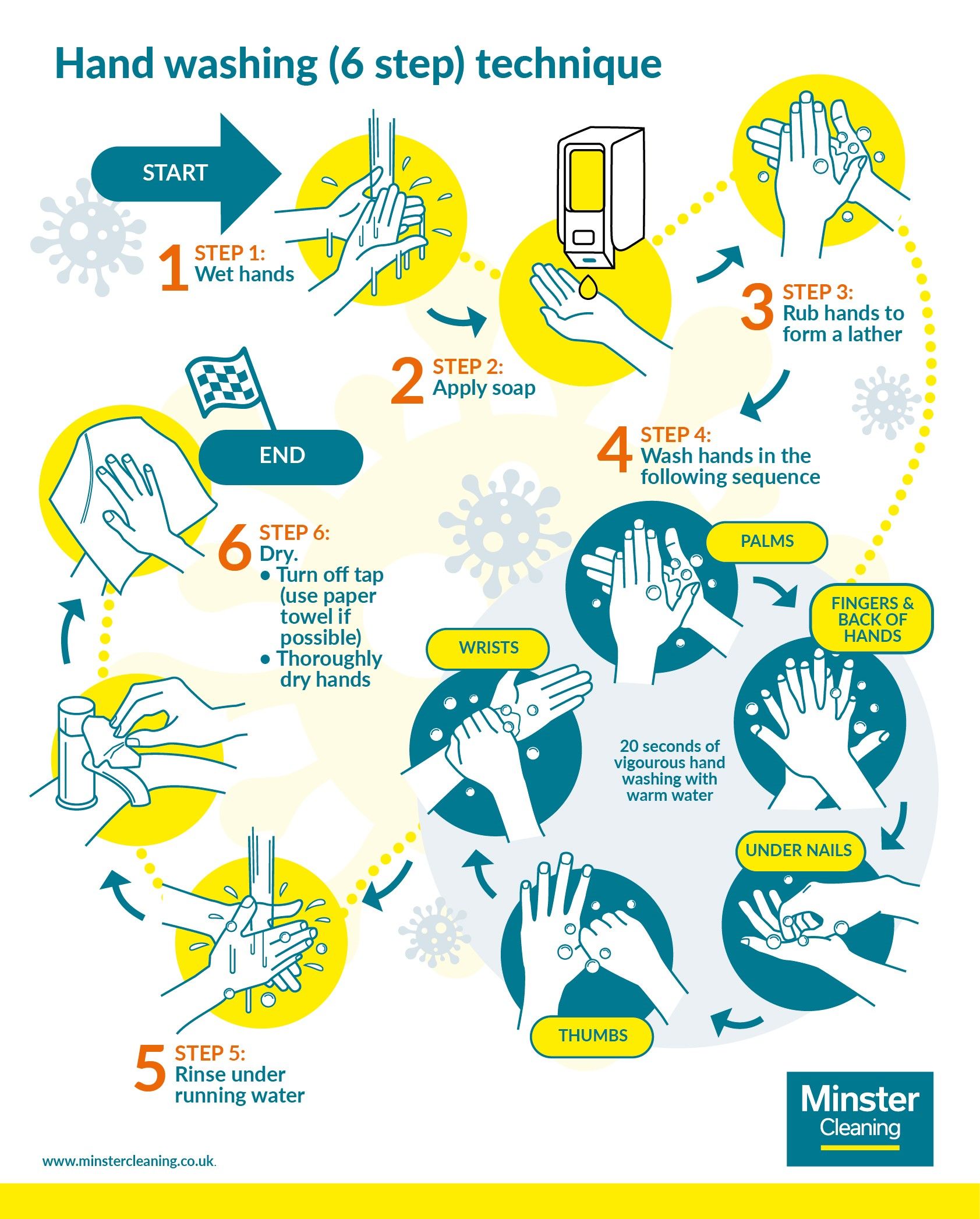Business owners have a responsibility under the Health and Safety at Work Act 1974 to ensure the health, safety and welfare of employees. This includes taking steps and measures to minimise any exposure to sickness in the workplace.
1. Personal hygiene
It is important that all staff members practise good personal hygiene at work and at all other times. Hand hygiene is key in preventing the spread of viruses (such as Covid-19) and bacteria. Staff should always wash their hands properly by following the correct hand washing guidelines which should cover the following steps:
- Wet hands (preferably under running water)
- Soap hands
- Lather hands
- Wash hands (20 seconds of vigorous hand washing with warm water). Washing should include wrists, thumbs, under nails, fingers, palms and backs of hands.
- Rinse hands (preferably under running water)
- Dry. Wherever possible turn off tap with a paper towel. Thoroughly dry hands, preferably with a disposable towel.
Jewellery and false nails also need to be cleaned properly as these can also spread viruses and bacteria.
Staff should regularly check their hands for cuts and abrasions. These should always be covered with an appropriate dressing.
Staff should refrain from touching eyes, mouth or nose with their hands as these are entry points for infection.
Hand sanitisers are useful when additional rapid hand cleansing is needed. If alcohol based, these should contain a minimum of 60% alcohol.
“Hygiene experts, the NHS and Public Health England all agree that to kill most viruses, a hand sanitizer requires at least 60% alcohol content…”
2. Workplace cleaning
In addition to any cleaning carried out by a cleaning contractor or in-house cleaners, it is important that staff take responsibility for the cleaning of their workstations. Use of disinfectant wipes is recommended.
Frequent touch points are areas that numerous staff come into contact with, several times during the course of a working day (e.g. door handles/push plates, handrails, light switches, telephones, keyboards, appliance handles, kitchen work surfaces, sink taps, toilet flushes and printers). Staff should also be encouraged to clean these areas regularly to reduce the risk of cross contamination.
Both workstations and frequent touchpoints should also be cleaned as part of an organisation’s usual cleaning schedule.
3. Social distancing
Maintaining a minimum 2 metre social distancing policy at all times in the workplace is crucial in inhibiting the spread of Covid-19.
“The UK’s Scientific Advisory Group for Emergencies (SAGE) estimates that the risk of SARS-CoV-2 transmission at 1m could be 2-10 times higher than at 2m.”
SOURCE: https://www.bmj.com/content/370/bmj.m3223
Where this is not possible, mitigating actions should be taken. These can include configuring premises so that there is no face-to-face seating, using screens or barriers to separate employees and reducing the amount of people that any employee has contact with.
Social distancing applies at all times, including breaks and start and finish times (which businesses may wish to consider staggering). It also applies to an employee’s journey to and from work – businesses may wish to consider the use of different entrances and exits.
4. Education
To help staff members comply with hygiene, cleaning and social distancing requirements, clear signage and guidance should be available. This will ensure that these key messages are regularly reinforced. Examples include hand washing guides, policies regarding capacity in communal areas and maintaining distance between themselves and others.
Businesses should also make sure that every staff member reads and understands the relevant risk assessments and what their responsibilities are to adhere to any requirements.
Please click on the image below to enlarge.


